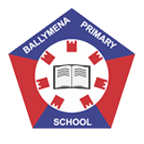Thinking Maps
Thinking Maps were developed as a language for learning in 1988 by Dr David Hyerle. There are eight maps, each representing a fundamental cognitive skill such as comparing, contrasting, sequencing, and cause and effect reasoning. The maps are displayed in all classrooms as a quick reference for pupils. A software version of the Thinking Maps is also utilised in KS2 classrooms. All teachers have been trained by Kestrel Education in the use of Thinking Maps.
| Thinking Maps | Thinking Processes | Key Questions | Key Thinking Vocubulary | Example Uses |
|---|---|---|---|---|
 Circle Map |
Defining in Context | How are you defining this idea? | List, Define, Brainstorm, Identify, Relate to prior knowledge. | Gathering known information in the "World Around Us" topics; brainstorming for a writing lesson. |
 Bubble Map |
Describing | How would you describe this object or person? What adjectives are most suitable? | Describe, Adjective, Feelings, Use all the senses. | Describing things in literacy; identifying qualities in a PDMU lesson; recording the traits of a character in a novel. |
 Double Bubble Map |
Comparing and Contrasting | What are the similarities and differences between these characters or objects? | Compare, Contrast, Similarity, Difference. | Comparing Characters in a reading book; finding similarities and differences in a science lesson. |
 Tree Map |
Classifying | How can this information be stored or classified? | Classify, Sort, Group, Main ideas, Supporting details, Categorise, Sub category. | Classifying living things in science; finding main ideas and supporting ideas in a story. |
 Brace Map |
Part-Whole | What are the parts and subparts of this whole physical object? | Parts of, Take apart, Show structure. | Analyse physical objects; Parts of a living thing; Boundaries in Geography; Parts of tangible objects. |
 Flow Map |
Sequencing | What happened? What is the sequence of events? What are the sub stages? | Sequence, Order, Recount, Retell, What happens next, Cycles, Patterns. | Plot a story; Show historical events in sequence; Steps in problem solving in maths; Identifying stages of a life cycle. |
 Multi-Flow Map |
Cause and Effect | What are the causes and effects of this event? What might happen next? | Causes and effects, Discuss consequences, Predict, Describe change, Identify motives. | Show and analyze cause and effect relationships. |
 Bridge Map |
Seeing Analogies | What is the analogy being used? | Identify the relationship, Guess the rule, Interpret symbols. |
Identify similarities between relationships. |
